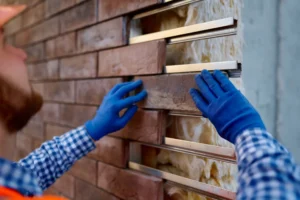Structural
Navigating Fire Safety Regulations: What You Need to Know About Fire-Rated Cladding Compliance
As modern construction projects continue to evolve, so do the regulations governing fire safety. Fire-rated cladding plays a pivotal role in ensuring the safety of buildings, and understanding the compliance requirements is essential for architects, builders, and property owners. In this article, we will explore the key aspects of fire safety regulations related to fire-rated cladding and how to navigate them effectively.
Understanding Fire Safety Regulations
 Fire safety regulations are designed to protect the public from fire hazards and ensure that buildings can withstand potential fire incidents. These regulations vary by region and may include national, state, and local codes. Key elements often include:
Fire safety regulations are designed to protect the public from fire hazards and ensure that buildings can withstand potential fire incidents. These regulations vary by region and may include national, state, and local codes. Key elements often include:- Building Codes
Building codes outline the minimum safety standards that must be met during construction. They often specify the types of materials that can be used, including requirements for fire-rated cladding based on the building’s height, occupancy type, and use. Familiarizing yourself with the relevant building codes is crucial for ensuring compliance.

2. Fire Resistance Ratings
Fire-rated cladding materials are assigned specific fire resistance ratings, indicating their ability to withstand fire exposure for a set duration. Understanding these ratings is essential for selecting the right materials for your project. Ratings typically include classifications such as Class A, B, or C and duration ratings ranging from 30 minutes to several hours.
3. Testing and Certification
Many fire-rated cladding products must undergo rigorous testing to ensure they meet established fire safety standards. Certification from recognized testing laboratories confirms that the materials comply with national and international fire safety regulations. Always check for certifications when selecting cladding materials for your project.

Ready to Enhance Your Building’s Fire Safety?
Don’t compromise on safety! Contact us today to discuss how our fire-rated cladding solutions can protect your
property and ensure compliance with all safety regulations.
Compliance Checklist for Fire-Rated Cladding
- Research and Understand Local Regulations Begin by thoroughly researching the fire safety regulations specific to your area. Understanding local codes ensures that you comply with all necessary requirements.
2. Choose Certified Materials
Many regions have strict building codes that require the use of fire-rated materials in certain applications. Using fire-rated cladding ensures compliance with these regulations, which can help avoid potential legal issues and enhance a building’s marketability. For more information on compliance, visit our Regulatory Compliance section.
3. Work with Qualified Professionals
Engaging experienced architects and contractors who are familiar with fire safety regulations can streamline the compliance process. These professionals can help you navigate the complexities of regulations and ensure that your project adheres to all necessary codes.
4. Follow Proper Installation Practices
Adhering to the recommended installation guidelines for fire-rated cladding is vital for maintaining its fire resistance. Proper sealing of seams and joints is necessary to prevent fire penetration

5. Stay Updated
Fire safety regulations can change over time. Staying informed about updates and amendments to building codes will help you maintain compliance in ongoing and future project
Benefits of Compliance
Enhanced Safety: Compliance with fire safety regulations significantly enhances the safety of occupants and protects property from fire damage. Fire-rated cladding is a proactive measure that contributes to overall fire safety.
Legal Protection: Adhering to regulations minimizes the risk of legal issues and liabilities. In the event of a fire incident, demonstrating compliance can safeguard you from penalties and claims.
Peace of Mind: Knowing that your building meets all safety standards provides peace of mind for both property owners and occupants. It assures everyone involved that safety is a top priority.
Conclusion
Navigating fire safety regulations is crucial when it comes to incorporating fire-rated cladding into construction projects. Understanding local codes, selecting certified materials, and following proper installation practices are essential steps to ensure compliance. At AMTA ARGC, we are dedicated to providing guidance and expertise in fire-rated cladding solutions that prioritize safety and compliance.


